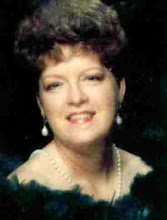
Happy New Year to Everyone!
Click on this link or copy into your browser to send a New Year's Card!



















Ten Commandments For Early Childhood Teachers
Thou shall keep a positive attitude.
Thou shall make each child feel special.
Thou shall be a good model.
Thou shall know as much as you can about the background of each child.
Thou shall be full of energy and enthusiasm.
Thou shall forgive yourself and your students.
Thou shall communicate constructively.
Thou shall make learning fun.
Thou shall be a dream maker.
Thou shall honor thy profession.
More Teacher Poems at: http://mrscjacksonsclass.com/poemspoetrymonth.htm





Congratulations on being one of our Top 2nd Grade Teachers, South Region. Your blog was amazing in our eyes, providing your students and their parents with all of the necessary information required to succeed. We know that you will continue to keep up the amazing work you do in educating children. As a token of our appreciation, we present to you our awards badge. You can display this badge on your blog to signify your win, and to let your class know that you were recognized as a Top Teacher in your region!